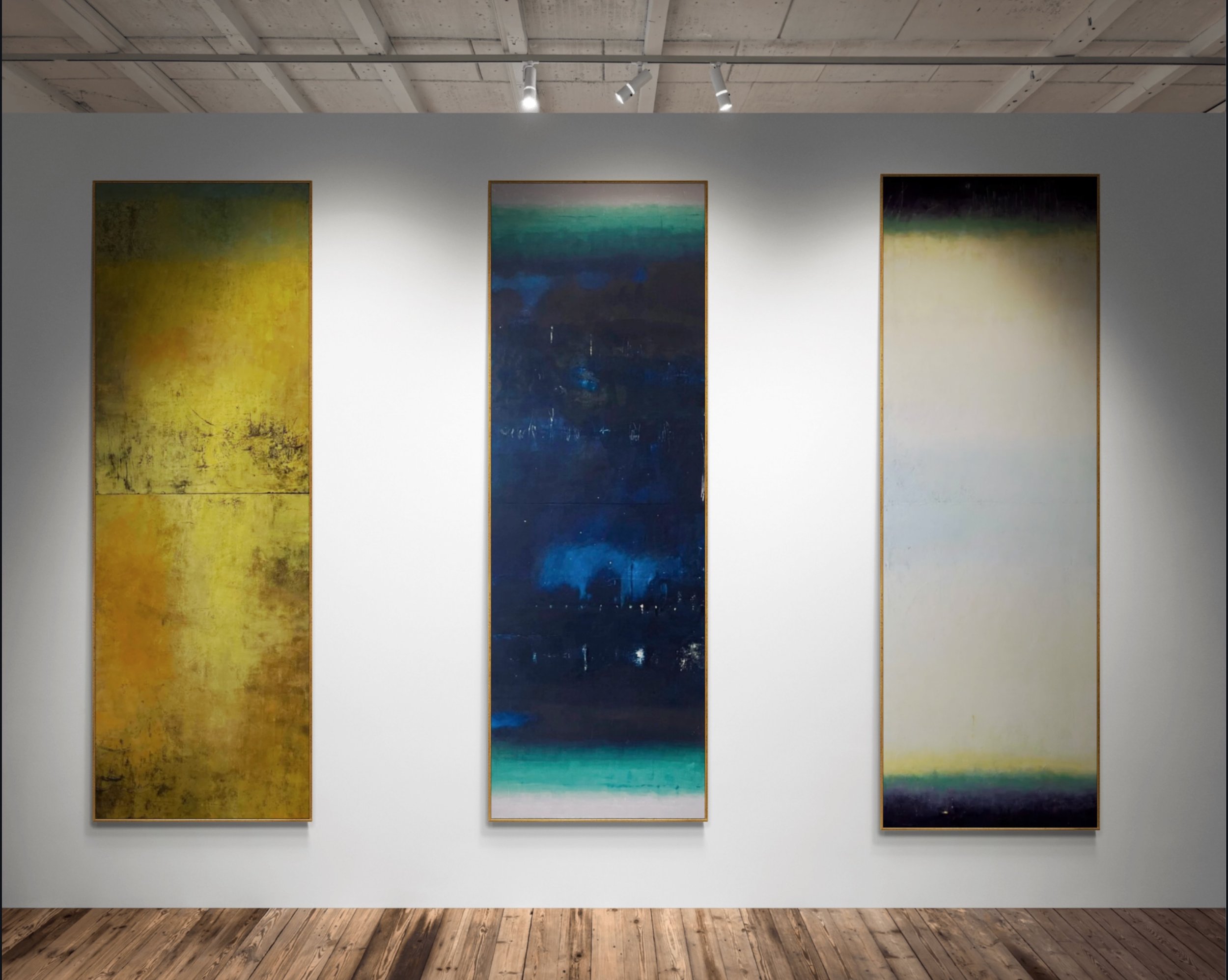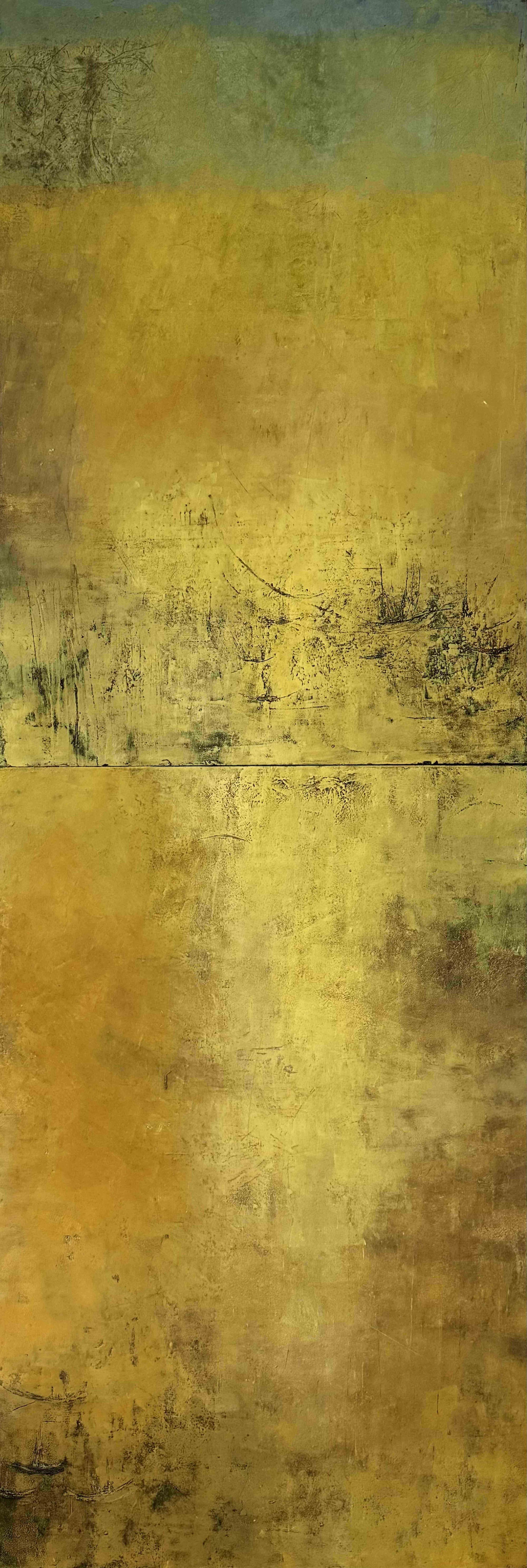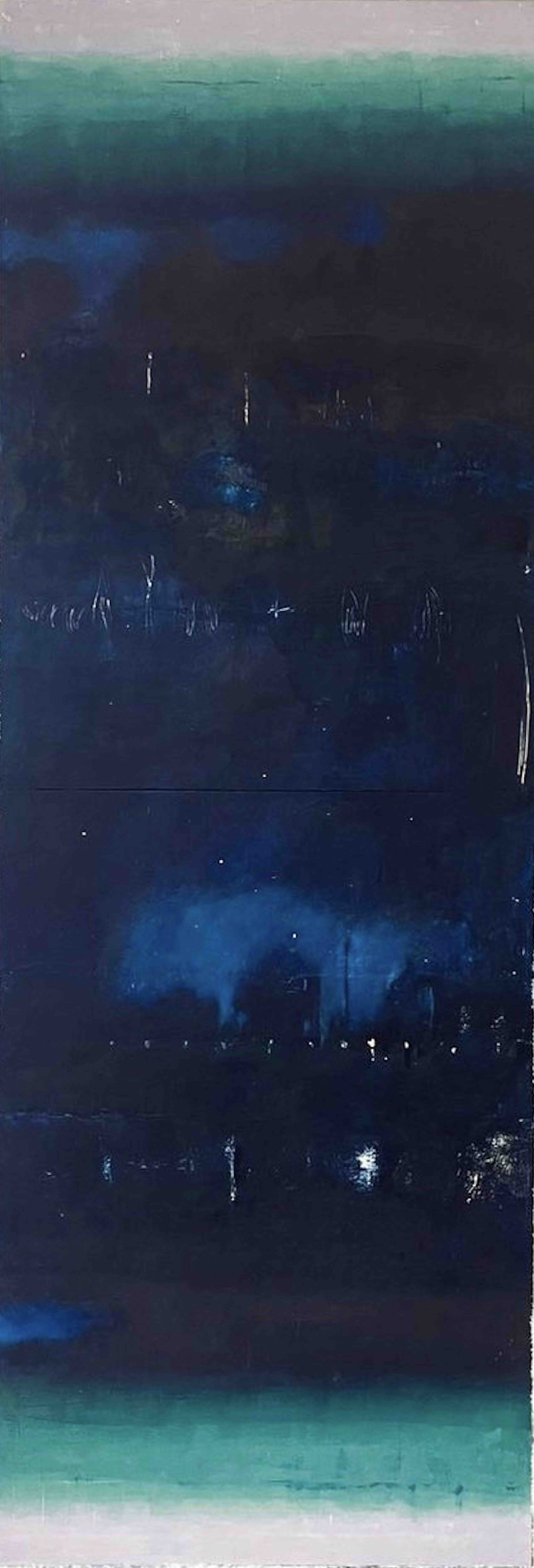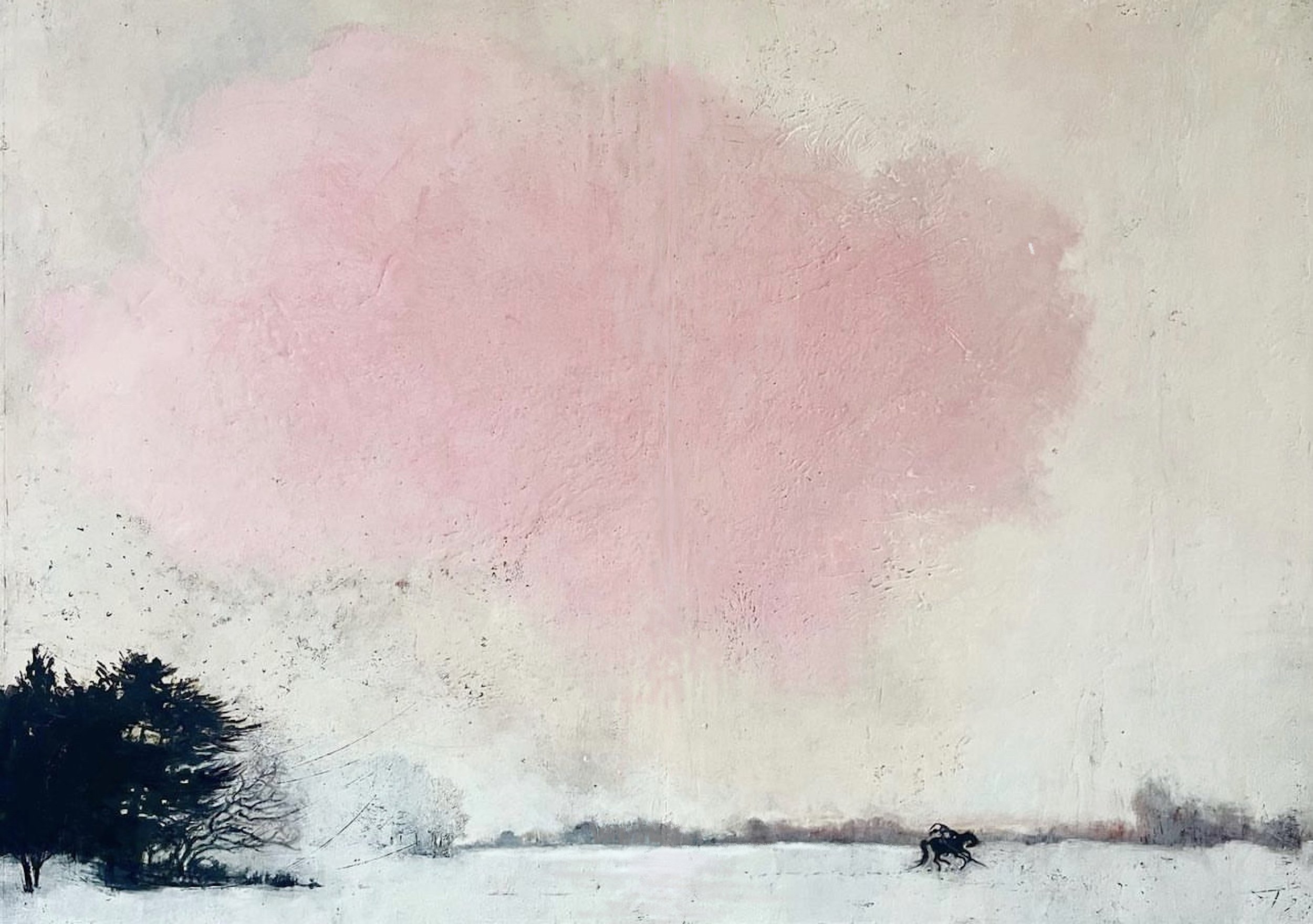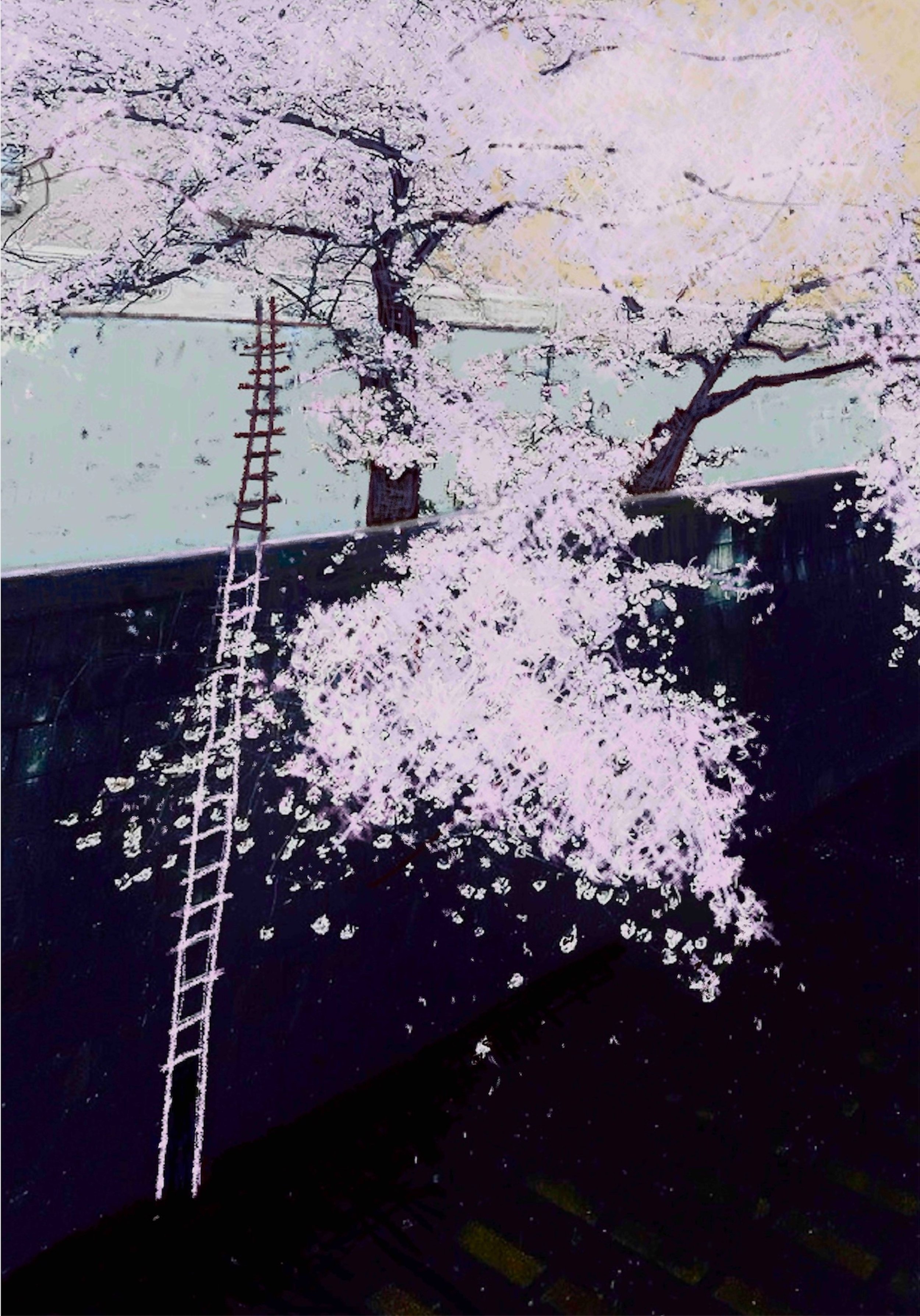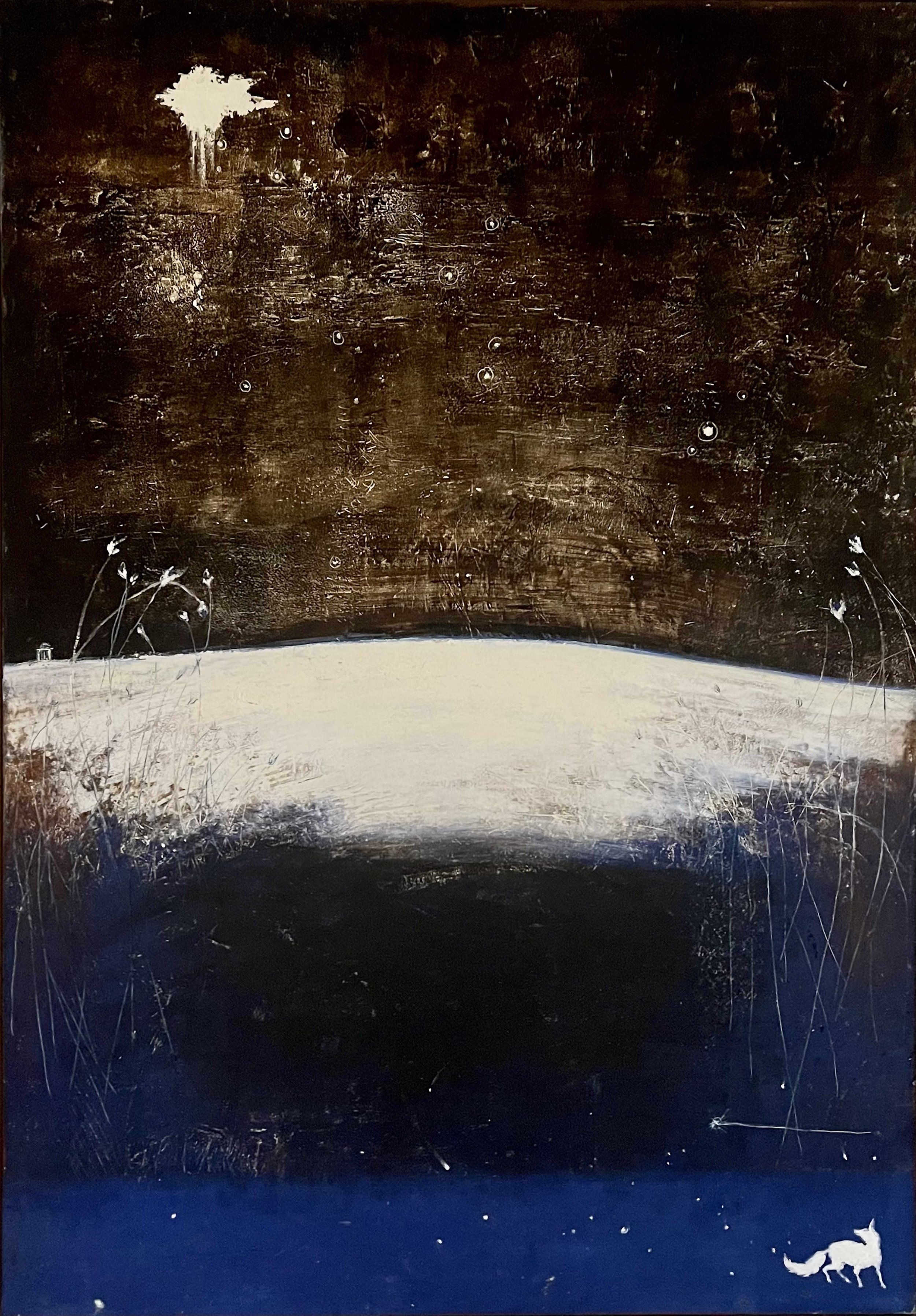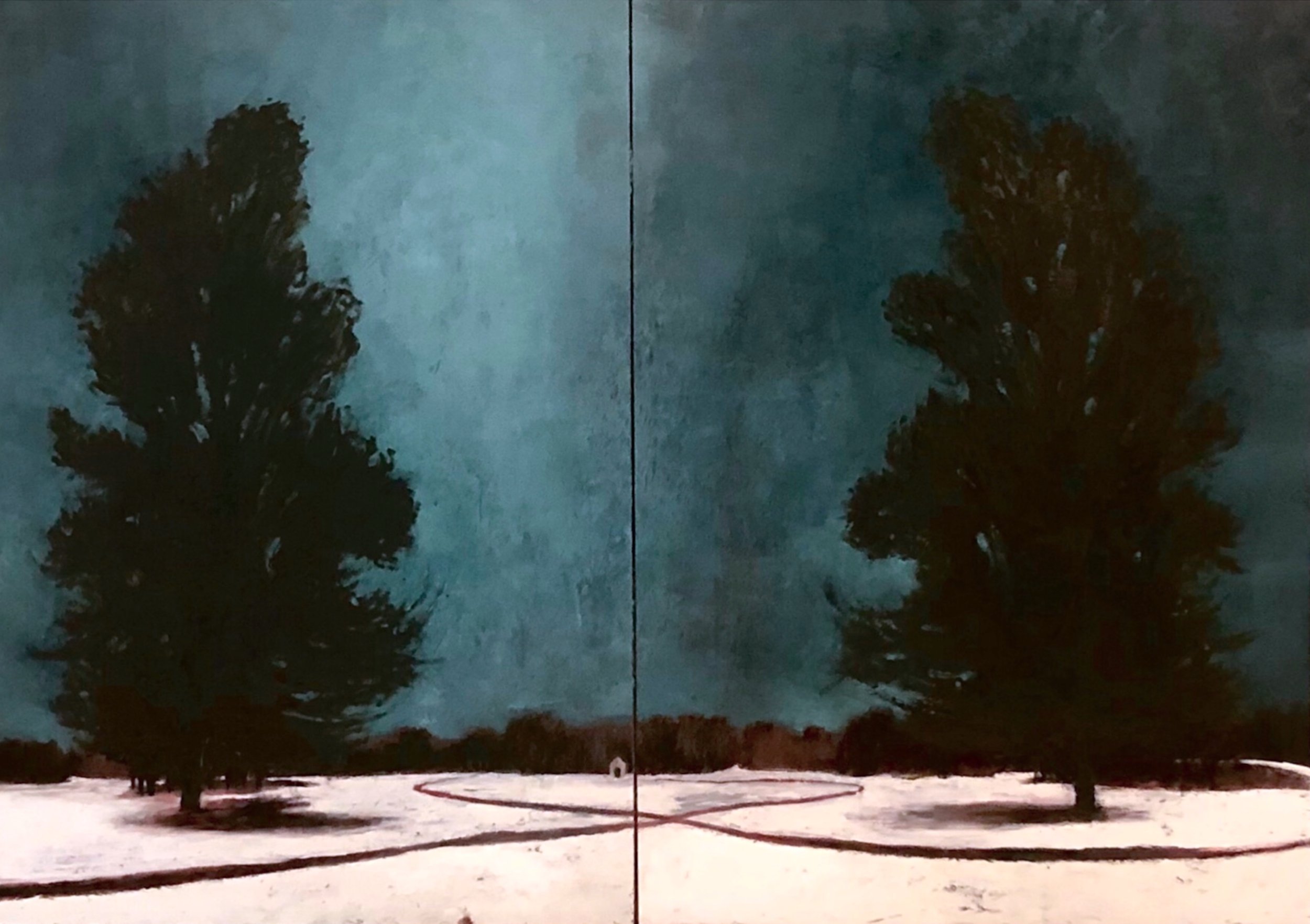Interview
Laura Courtney
Laura was born in Sydney, Australia in 1965. In the 80’s, she resided in New York City and traveled throughout Europe. She also studied Fashion Design at the East Sydney Technical College in Sydney. In the late 80’s she resided in the USA and Europe and started her career as a teacher of Yoga and Meditation. In 2004, she attended the National Art School in Sydney, taking short Courses in drawing and painting. In 2006, she studied Traditional Painting and Art History at Grosvenor Studios Kings Cross, Sydney NSW. Her gallery/agent is: The Australian Galleries Sydney & Melbourne, Australia. Her recent solo exhibitions are: ‘Clambering Between Temples’ Montreuil Porte Ouverte, Paris (2019) and ‘Atmospheric Pressure – landscape studies in cold wax’ Montreuil Porte Ouverte, Paris (2018).
What is your background and how did you start your journey in the art world?
“Born in Australia, I became a professional painter in my late 30’s after living in meditation ashrams around the world for 18 years and teaching meditation. I knew I wanted to be an artist since childhood as creative expression came naturally to me and was fortunately always encouraged but I took a rather long detour to set the spiritual foundation for my life. It turns out the discipline, focus and distillation of ideas from those years proved invaluable in my journey as a painter, and when I started to paint 20 years ago the worked poured out of me like some deep well waiting to be tapped. I studied traditional oil painting for 5 years in Sydney and my generous teacher was exceptionally knowledgeable about technique and the picture making process, which I still rely on today. When I went to visit my parents new home in Tasmania the gothic, wild landscape completely seduced me and I knew that landscape painting would be my genre. I started painting small works of the Tasmanian landscape and was soon picked up by a prominent Australian gallery after being placed as a finalist in a distinguished art prize. From there I had exhibitions every year until I moved to Europe, first to Rome and then Paris, where I attuned myself to the vastly different light and impressions of the European milieu and thought much about how I wanted to enter that conversation as a painter. I also began using cold wax medium in my oil painting practice and so was on new and steep learning curve to incorporate an unwieldy medium that behaves very differently and has changed my work significantly from the representational landscape genre to increasingly a painterly abstraction.”
What does your work aim to say? Does it comment on any current social or political issues?
“I'm not sure I ever set out to say anything pointedly with my work because I feel a well executed painting, like great poetry, is at its best experienced. Its profundity and strength rests on its ability to connect and spur a range of concepts and feelings in the viewer. As a painter, I depict what sustains my interest. With my early work, I painted landscapes at dawn and dusk, the time of transition where possibility is simultaneously renewed and fading. With my more recent work, using cold wax and oil paint, I am moving more towards abstracted aspects of the natural world that resonates with archetypes and dreams. In this way my work is less social or political, rather it addresses more fundamental aspects about what it is to be human, to hope, to dream, to yearn or aim for something a little more, a little higher, something fleeting and sublime.”
Do you plan your work in advance, or is it improvisation?
“I come at it from both sides. With representational landscape painting, I find the value of a resolved study in charcoal or ink cannot be over-estimated. It’s like having a good map and in my experience it ultimately saves me a lot of time and frustration, let alone money on expensive materials. Sometimes, I work over and over on an idea in many studies, or put it away and come back after some time, seeing it from a different angle, experimenting with tone, or palette or scale. Sometimes, I have a fully formed picture in my mind and nail it in a quick thumbnail sketch and then scale it up. When I work in cold wax and oil it is a different approach and requires a flexibility. Cold wax is predominantly used by abstract painters whose works often succeed entirely on texture, tone, color and composition. One of the things I most enjoy about wax painting is that the more layers you have, the richer and more substantial the finished work will most likely be. Directly applying layers, combined with scraping back into previous layers, adds to the complexity and effects that can be achieved. Wax has a wonderful translucent quality that allows light to pass through to previous layers, so there are distinct benefits to having many layers and building up the surface. This way of working has steered me more towards experimentation and I find serendipity plays a key role in learning the endless possibilities for what wax can do, allowing the surface to lead me until I pick out an idea that occurs spontaneously, or some long held motif claims the space. Consequently nothing is wasted with this medium and now I don't mind if things don't necessarily go to plan, although you can end up with a large painting that weighs 15 kilos.”
“With my more recent work, using cold wax and oil paint, I am moving more towards abstracted aspects of the natural world that resonates with archetypes and dreams.”
Are there any art world trends you are following?
“There are three trends that I follow presently. I've lately become interested in the NFT digital art space. At first it seemed to be dominated by adolescent themes and work that lacked any substance, but there are some really interesting effects and pieces being created by talented artists. Because I am also a passionate photographer I really enjoy manipulating my images with partial effects and even drawing over images digitally so I have been delving into this space a bit and am aiming to release some works exclusively in the NFT art space. We are at the early stages with this branch of the visual arts and I expect technology is going to spur some fabulous immersive art experiences . Secondly, I love streetart, I love its defiance, its cleverness, its wit and ingenuity. I particularly follow the work of JR who flyposts large black-and-white photographic images in public locations and, as successful as he now is, he remains steadfast in questioning the established order of things with balanced heart and mind. And lastly I have a great fondness for the growing art movement dedicated to ephemeral art works, often using only found natural objects on site, using no tools just ingenious solutions to make delicate ,whimsical or even monumental artworks that are at the mercy of the elements and may only last a few hours.”
What process, materials and techniques do you use to create your artwork?
“I treat my artistic practice like a job. Turning up is half the battle as an artist because it's a bit like going on stage. Even if some days are more productive than others, at least you are in the space and things will get done. No matter the size or the condition, I have always made my studio a haven filled with images that enthrall or remind me of particular ideas. I pin up notes about picture making, color samples from broken pots or old second hand paintings that have some lovely bit of sky. I collect art postcards because the quality is often very good and I don't have to hunt in books or online for the picture. I make sample charts of colours and palettes used in specific paintings that I know I want to use again. I do have a computer in my studio but I have a rule about being on it. Once a day, I check email if I know something is time sensitive but apart from that I only use it too look up something art related or to listen to podcasts or audio books while I work. All these things feed me and inspire me ever onward, reminding me why I am making art.
For studies I use paper, ink , charcoal, pencil and water-colors. I aim to draw at least 15 minutes every morning over coffee and I take photographs constantly for inspiration, but I learned not paint from them as they make your work tight and clinical. I use an acrylic ground under all of my oil painting work and now with cold wax painting I use a lot of implements to get the layers and effects I am after. I usually start with a veil of translucent color, then a brayered layer of thick opaque paint then another contrasting layer, repeating this process over and over so that I can dig back into with a palette knife or a skewer, or steel wool, or with bottle brushes which are a particular favorite. Another technique is pressing paper into a wet layer to peel off fresh paint which creates a variety of marks and can be smoothed out or softened with a brush or a palette knife etc. By then I have enough to be on the look out for something coming together and maybe pick out piece of landscape or a motif that comes to mind. That is when I take brush in hand and paint details and refine the work to its conclusion. I am after all a painter first and foremost, not just a wielder of kitchen implements.”
What does your art mean to you?
“Pure and simple it keeps me sane, it keeps me focused. It allows me to shut down all the noise and concern with the seemingly insurmountable and self inflicted problems we are facing as a species. It allows me to make an offering to the world, to say, here stop, look at this, I hope you finds something of value or solace here.”
What’s your favourite artwork and why?
“This is very difficult to answer. If I had to narrow it to one, it would be the last of Rembrandt's self portraits from 1659 It is tender, intimate, dark and yet somehow also defiant. His mastery as an oil painter never gets old. His paintings have been endlessly analyzed and examined and all we know is that he achieved the effects he mastered only used stand oil, pigment and whiting, and yet the astonishing range of effects cannot be replicated accurately. To my mind he really was the first abstractionist. Just look at any of his dynamic painterly marks around the areas of focus, it's pure freedom, confidence and a love for the medium itself. I usually just want to give up after looking at his work but it invariably turns to a bolt of inspiration because it's also what I love to do so I get back to the studio and make something worthy.”
Have you had any noteworthy exhibitions you'd like to share?
“I exhibited every year in Australia and every show felt like a milestone and mountain to climb, just as it should. For me every show should feel as if I gave it all I had. I am currently working on my first solo show in Paris for 2025.”
Website: lauracourtney.com
Instagram: @lauracourtneyartist
Brush Bio: www.brush.bio/laura-courtney
Other links: www.pinterest.com.au/lcourtneypaints


